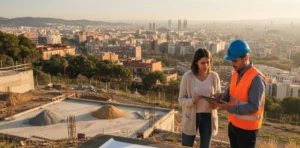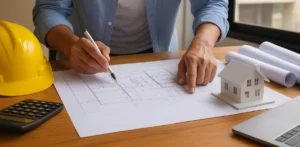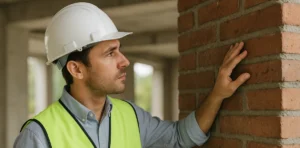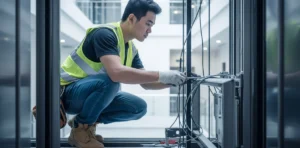Table of Contents
El diseño sostenible se ha convertido en una prioridad para quienes buscan construir hogares que respeten el medio ambiente y promuevan la eficiencia energética. Una de las estrategias más efectivas es utilizar materiales reciclados, lo que no solo reduce el impacto ambiental, sino que también puede resultar en ahorros significativos. En esta guía, exploraremos cómo diseñar una casa sostenible con materiales reciclados, abordando desde la planificación inicial hasta la elección de materiales y técnicas constructivas.
What is a sustainable home?
A sustainable home is one that minimizes its environmental impact throughout its life cycle. This includes everything from the selection of materials to energy consumption and waste management. The goal is to create a living space that is efficient, healthy, and harmonious with its surroundings. It also seeks to adapt to the local climate, optimize resources, and foster a responsible relationship between humans and their natural environment.
Benefits of a sustainable home
- Energy efficiency: Reducing energy consumption through the use of efficient systems and renewable energy.
- Health and wellness: Indoor environments with better air quality and thermal comfort.
- Economic savings: Reduction of long-term operating costs.
- Resale value: Greater attractiveness in the real estate market.
- Reducing ecological footprint: Lower emissions of polluting gases.
Importance of recycled materials in construction
The use of recycled materials in construction is a key practice in sustainable design. These materials come from waste that has been processed for reuse, reducing the need for virgin resources and decreasing waste generation. In turn, they foster the circular economy and create a new life for products that would otherwise end up in landfills.
Advantages of using recycled materials
- Reduced environmental impact: Less extraction of natural resources and reduction of CO₂ emissions.
- Circular economy: Promoting a system where materials are continuously reused.
- Innovation in design: Possibility of creating unique spaces with unconventional materials.
- Promoting local employment: Boosting recycling and reuse industries.
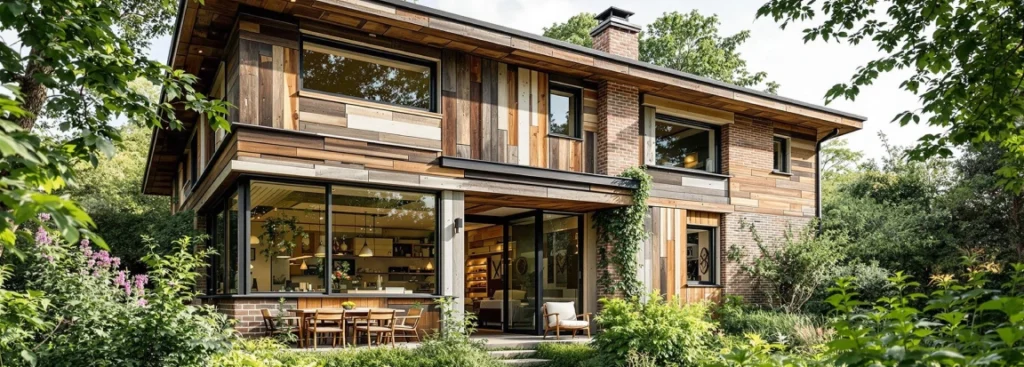
Steps to design a sustainable home with recycled materials
1. Planning and design
Before starting construction, it is essential to carry out detailed planning that considers:
- Solar orientation: Take advantage of natural light to reduce the need for artificial lighting.
- Cross ventilation: Design openings that allow air circulation, improving thermal comfort.
- Zoning: Distribute spaces according to their use and thermal needs.
- Adaptation to the terrain: Minimize earth movements and take advantage of the natural conditions of the site.
2. Selection of recycled materials
Some common recycled materials in sustainable construction include:
- Reclaimed wood: From demolitions or pallets, ideal for structures and finishes.
- Recycled bricks and blocks: Manufactured from construction waste.
- Recycled glass: Used in windows and decorative elements.
- Eco-friendly insulators: Such as recycled cotton or cellulose.
- Eco-friendly coatings and paints: Free from toxic compounds, ideal for healthy interiors.
3. Sustainable construction techniques
Implement construction methods that complement the use of recycled materials:
- Modular construction: Allows for greater efficiency and less waste.
- Prefabricated systems: Reduction of time and waste on site.
- Passive design: Maximizes the use of natural resources for air conditioning.
- Green Technologies: Integration of solar systems, water harvesting, and energy automation.
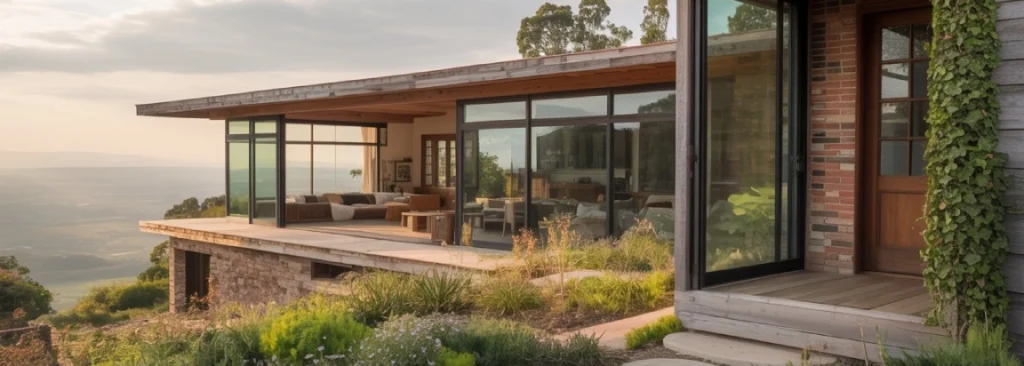
Tips for successful eco-design
- Research local suppliers: Reduce the carbon footprint associated with transportation.
- Environmental certifications: Look for materials with seals like FSC or Cradle to Cradle.
- Reuse existing elements: Doors, windows, and other components can be given a second life. Also consider decorative elements or old furniture.
- Continuing Education: Stay informed about new sustainable techniques and materials. Participate in workshops, trade shows, and professional networks in the sector.
Ejemplo de proyecto: Casa Verde
The "Green House" is a residential project that exemplifies the use of recycled materials in its construction. Beyond its efficient structure and low energy consumption, the interior design was carefully planned to reflect the principles of sustainability. A natural and warm aesthetic was chosen, with furniture made from reclaimed secondhand wood, eco-friendly textiles, and integrated storage solutions using reused materials. One of the main challenges was ensuring thermal insulation using only recycled materials, which required extensive research and testing of different systems until the most efficient combination was found. Work was also done to adapt modern facilities to an architecture conceived from a reuse perspective, which involved technical adjustments without compromising the functionality or harmony of the whole. The design focused on optimizing solar orientation and maximizing natural ventilation, resulting in an energy-efficient result:
- Main structure: Reclaimed wood from old barns.
- Insulation: Recycled cellulose from newspapers.
- Cladding: Recycled bricks from local demolitions.
- Energy: Solar panels and rainwater collection system.
- Interior design: Integration of restored furniture and recycled wood floors.
This project demonstrates that it is possible to combine aesthetics, functionality, and sustainability without compromising comfort or architectural beauty.
Conclusion
Designing a sustainable home with recycled materials is a decision that benefits the environment and its inhabitants. It also represents a commitment to innovation, responsibility, and quality of life, both now and in the future. By opting for ecological solutions, you are contributing to the development of more resilient communities prepared to face the challenges of climate change. We encourage you to take the first step: evaluate your options, educate yourself, and begin building a home that inspires others. In addition to reducing our ecological footprint, this type of construction paves the way for a new culture of responsible and conscious living. With proper planning, a conscious selection of materials, and the application of sustainable construction techniques, it is possible to create spaces that are efficient, healthy, and in harmony with nature.
Adopting this approach is not only an investment in the present, but also in the future of the planet. If you're considering starting your own project, this guide is the perfect starting point for transforming your home into a true example of environmental responsibility.
Recommended Additional Resources
- Institute for Energy Diversification and Saving (IDAE): Official information on energy efficiency, subsidies and sustainable design in Spain.
- Green Building Council Spain (GBCe): Promotes sustainable building in the construction sector.
- Passivhaus Building Platform (PEP): Resources and training on passive design and energy-efficient homes.
- Ecomaterials – EcoHabitar: Magazine and directory with ecological suppliers and materials.
- World Green Building Council: Global organization that promotes sustainable and environmentally friendly buildings.
